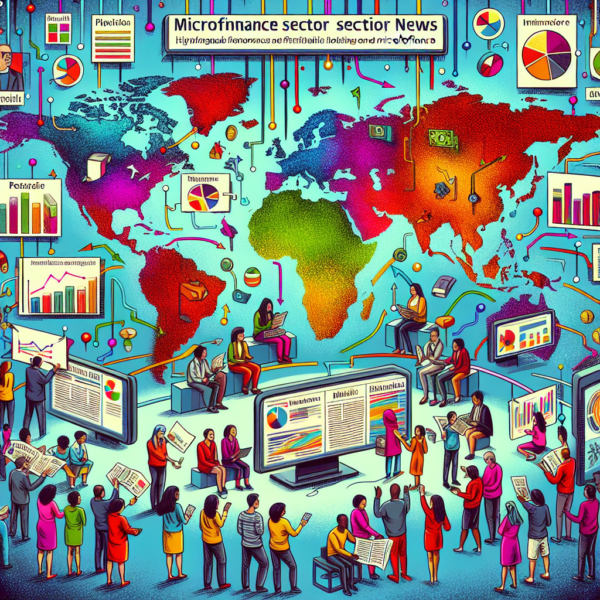# The Latest Trends and Updates in the Microfinance Sector
Microfinance has always been a vital tool in improving the economic conditions of individuals and small businesses in underprivileged regions. It enables them to gain access to financial services which are otherwise unavailable through traditional banking systems. As the sector continues to evolve, several developments have made headlines, reshaping the landscape of microfinance. Below are the significant trends and updates in the microfinance sector.
Expansion of Digital Microfinance Services
The digital revolution has not left the microfinance sector untouched. There has been a significant shift towards digital microfinance services, which are altering the way financial services are delivered to the impoverished and unbanked populations across the globe.
Mobile Banking and E-Wallets
With the proliferation of smartphones and internet services, mobile banking and e-wallets have become increasingly popular. They offer an easy and secure way for microfinance beneficiaries to conduct transactions, save money, and even access microloans without the need to travel to a physical bank.
Digital Microloans
Another innovation in the sector is the availability of digital microloans. These loans are processed much faster than traditional ones, with some platforms offering instant approval and disbursement of funds. This speedy process is particularly beneficial for small entrepreneurs who often need quick financial support to seize business opportunities.
Focus on Women Empowerment
Microfinance institutions (MFIs) are increasingly focusing on empowering women. Given that women are often the most economically marginalized group, this focus not only aids in improving their personal economic status but also has a profound impact on their families and communities.
Targeted Financial Products for Women
Many MFIs have started offering financial products designed specifically for women, including microloans, savings accounts, and insurance products. These products are tailored to meet the unique needs of women, taking into account factors such as their earning potential and societal roles.
Financial Literacy Programs
Alongside financial services, education on financial literacy is also being provided to women. These programs aim to empower women by improving their understanding of finance and money management, which in turn, enables them to make informed decisions about their personal and business finances.
Increased Regulatory Scrutiny
The microfinance sector has seen increased regulatory scrutiny in recent years. This development is a double-edged sword; while it aims to protect the interests of the borrowers, it also poses new challenges for MFIs.
Stricter Guidelines and Compliance Requirements
Regulators across the globe are imposing stricter guidelines and higher compliance requirements on MFIs. This includes aspects such as loan disbursement processes, interest rates, and borrower protection measures. These regulations are intended to prevent over-indebtedness and unethical lending practices.
Impact on Operational Costs
Compliance with the new regulations often requires significant investment in terms of technology and human resources. For many MFIs, especially smaller ones, this raises operational costs, which could potentially affect their ability to offer low-interest rates on microloans.
Renewed Focus on Sustainability
Sustainability has become a key focus area in the microfinance sector, addressing both economic and environmental aspects.
Green Microfinance
Green microfinance is an emerging trend that combines microfinance with environmental sustainability. It involves offering microloans for eco-friendly purposes, such as renewable energy projects, sustainable farming practices, and energy-efficient technologies.
Long-term Economic Sustainability
There is also a growing emphasis on ensuring the long-term economic sustainability of microfinance projects. This includes providing support beyond financial services, such as business coaching and market linkage support, to ensure that beneficiaries can maintain and grow their businesses effectively.
In conclusion, the microfinance sector is undergoing significant transformations, embracing digital innovation, focusing on women empowerment, adapting to increased regulatory scrutiny, and emphasizing sustainability. These developments not only enhance the delivery of financial services to the unbanked and underprivileged but also ensure the long-term impact and viability of the microfinance sector.
